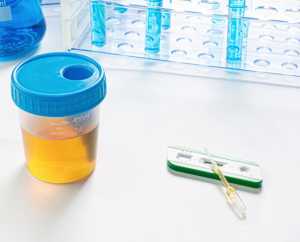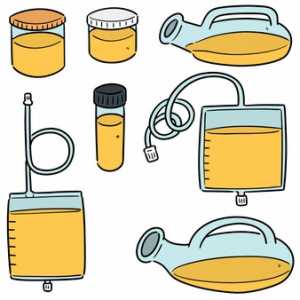Importance Of Urine Culture Test In The Diagnosis And Treatment Of UTIs
Urine culture tests are conducted to detect the presence of bacteria and other organisms in a urine sample. Typically bacterias cause a Urinary Tract Infection(UTI). A urine culture test helps diagnose a Urinary tract Infection and identify the type of bacteria which is causing the UTI. Through the urethra, the bacteria enters the Urinary tract and subsequently grows rapidly, and develops into a Urinary Tract Infection.
Nearly all UTIs are caused by Escherichia coli, a bacteria found in stool. Other pathogens such as Proteus and Staphylococcus also cause UTIs. Candida, a type of yeast may also cause UTI. Occasionally, a Sexually Transmitted Infection may trigger a UTI.

Why Is It Done?
Normally, a Urine Culture Test is ordered by a doctor to-
- Find the cause of a UTI.
- Determine the treatment of UTI. This is known as Sensitivity testing.
- Check whether the treatment for UTI is working or not.
Symptoms Of Urinary Tract Infections(UTIs)
- Fever
- Pain and discomfort mainly in the abdominal area and lower back
- Painful urination
- Frequent urination
- Cloudy urine
- Red, cola-coloured or pink urine (a sign of blood in urine)
- Decreased urine output
When the UTI becomes serious, you may experience chills, vomiting or shaking.
How Do You Prepare For The Test?
Before you begin with the test, inform your doctor about the medications or supplements, vitamins that you have recently taken, since there is a chance that it may interfere with your results. Also, be mindful not to urinate at least one hour prior to the test and drink plenty of water(3 to 4 glasses of water) 15-20 minutes before the test. You need to fast before the test. Make sure that you collect a midstream urine sample and not the urine from the beginning or end for accurate results.
How Is It Done?
For urine culture tests, the urine can be collected in various ways.
- Clean-catch method
- Urinary collection bag
- Catheter
- Suprapubic aspiration

Clean-catch Method
Among all these methods, the most common one is a clean-catch method.
Before you start, the healthcare professional will ask you to cleanse your hands and genitals with a cleanser. Then you can collect the urine in a sterile cup. Return the container to the healthcare provider, and it will be sent to the lab for analysis.
Urinary Collection Bag
This is the most common method by which urine is collected from infants and children. In this method, a plastic bag will be attached to the child’s genitals using an adhesive, until the child urinates. Then the plastic bag is removed, and the urine will be sent to the lab for analysis.
Catheter
In certain cases, the healthcare provider may collect a urine sample using a thin hollow tube known as a catheter. For this procedure, the catheter will be inserted via the urethra into the bladder. The healthcare provider will be able to collect your urine sample once the tube is in place. He/she will fasten the end of the catheter before the urine reaches the catheter collection bag attached to the end of the catheter. Once the urine moves into the tube, then the healthcare professional will collect your urine sample using a syringe. The urine is not collected from the bag, because if urine remains outside for too long, then bacteria may start growing in it, making it unsuitable for urine culture.
Suprapubic Aspiration
This is a safe and simple technique for obtaining a urine sample from children. In this method, to obtain a urine sample, a needle is inserted through the abdominal wall into the bladder. This method is used after failed attempts of collecting an uncontaminated urine sample.

What Do The Results Indicate?
If your urine culture is positive, then it indicates the presence of a single type of bacteria, which is growing at higher colony counts in your Urinary tract. The viable bacteria concentration is expressed as Colony-forming units(CFU) per millilitre. In case of properly collected clean catch urine samples, cultures with more than 1,00,000 CFU/mL indicate infection. And for urine samples collected using catheter, culture with 10000 to 1,00,000 CFU/mL is considered as an indeterminate sample, due to contamination of the sample. Below 10,000 CFU/mL is considered as normal.
Sometimes, there won’t be a higher number of bacteria, even if there is an infection. At times lower numbers of bacteria indicate an infection. Suppose if you’re tested positive, then you need to undergo susceptibility testing, which is normally performed to guide treatment.
Results of urine culture tests are available within three days. If your results are positive, then your doctor may prescribe antibiotics to cure the infection. The results will be delayed in case if there is more than one type of bacteria or if there is just a slight presence of bacteria in your sample. Therefore you need to repeat the urine culture test.
Frequently Asked Questions
Why are urine cultures important during pregnancy?
If you’re pregnant, then your doctor may order for Urine cultures as a precautionary measure at several points during your prenatal or antenatal care. Suppose if you’ve developed a UTI, then it’s essential to diagnose and treat it as early as possible. If not given medical care, UTIs lead to poor labor outcomes and even premature labor.
Why are women more prone to UTIs than men?
Urinary Tract Infections(UTIs) are more common in women than men because the women’s urethra is shorter than men and it is adjacent to the anus. For that reason, it’s much easier for bacteria in the intestine to enter the urinary tract.

What is the treatment for UTI?
Urinary tract infections(UTIs) are usually treated with a round of antibiotics. The antibiotic prescribed by your doctor depends on the type of bacteria, and whether or not you have recurrent UTI as well as your medical history. With an antibiotic sensitivity test, your doctor can determine which antibiotic can fight off the bacteria or fungi, which is causing the UTI. You can treat UTI at home by drinking plenty of water and by urinating frequently.
What does sterile mean in urine culture?
Urine inside the urinary bladder is normally sterile since it doesn’t contain any living organisms, such as bacteria or fungi. But bacteria may enter through the urethra and enter the urinary tract and cause an infection.
How is the urine sample tested in the laboratory?
A urine sample is observed under the microscope and all the visible cells are counted. A urine sample is then cultured on agar plates inside an incubator. After 24 hours, if there is the growth of bacteria or yeast, then it is counted and the viable bacteria concentration is expressed as CFU/mL. If there is no significant growth, then the urine culture is considered as negative.
What other tests might I have along with the urine culture test?
Most importantly, your doctor may order a Urine Routine test when you consult the doctor with urine sensitivity problems. It is a set of tests which is used to diagnose a medical condition or disease if any.
Your doctor may order a urinalysis, along with a urine culture test. Urinalysis is a test which is used to detect white blood cells in a urine sample to diagnose UTIs. Your doctor may also order a blood test, to check for signs of infection in your blood sample.
What does the result “mixed growth doubtful significance” mean?
Mixed growth doubtful significance means a growth of more than one type of organism( a minimum of 3 organisms) in urine culture, and among the organisms, there is no predominating organism. This means the collected urine is contaminated during collection.